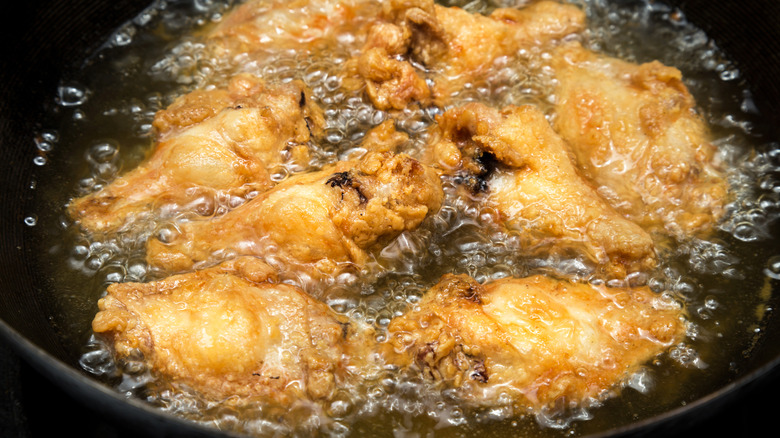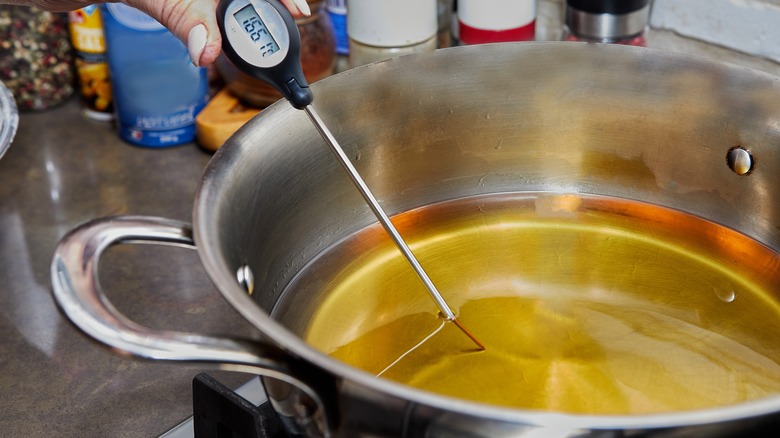Why You Should Never Overcrowd A Pot Of Oil
We may receive a commission on purchases made from links.
As much as our waistlines don't like it, we simply cannot resist fried food, and every culture has its favorites. In the U.S., fried chicken, French fries, and donuts are popular fried indulgences, while vegetable tempura is a favorite in Japan. For a sweet ending to your meal, people in Spain, Portugal, and Latin America enjoy the cinnamon sugar-coated treat, churros and Italians celebrate spring with stuffed, battered, and fried zucchini flowers or blossoms. Although it's called by different names globally, beignets, zeppoles, jalebi, and Native American fry bread are all fried dough sweetened with powdered sugar or syrup. According to CNN, our cravings for crunchy fried food dates back to the ancient Mesopotamians who invented frying pans for their fried dishes.
MasterClass defines frying as "cooking food in a bath of hot oil or fat, typically between 350-375 degrees." There are four types of frying, deep frying, pan frying, stir-frying, and air frying. Deep frying is commonly used in fast food since it's a quick and inexpensive cooking method. However, Healthline warns that foods cooked and fully submerged in fat or oil are high in calories and trans fat and should be eaten in moderation.
While air frying is a healthier and suitable substitute for deep frying many dishes, some recipes taste better deep fried. While easy to do, to safely and effectively deep fry at home, you should follow several tips, including never overcrowding the pot of oil, and here's why.
Maintain the proper oil temperature
Fried food is so delicious because the Maillard reaction takes place, the chemical process that transforms the amino acids and reducing sugars in food to create a new flavor, color, and odor. The hot oil dehydrates the surface of the food, making a golden crust that acts like a barrier, keeping the inside from dehydrating too. Often battered or breaded, the starchy surface gets crispy and rich, while the meat inside steams and gets juicy and tender (per MasterClass).
To safely deep fry at home, Today recommends assembling the right tools, using a high smoking point oil, and keeping kids out of the kitchen. If you don't have a deep fryer, a high-walled sturdy pot like a ceramic Dutch oven is a suitable substitute. Fill the pot no more than ⅔ full with oil, and then bring the oil to the recipe's recommended temperature before adding any food. Avoid overcrowding the pot since adding too much food at once will lower the temperature of the oil. Food fried at low temperatures absorbs too much oil making the outside soggy and greasy. For the Maillard reaction to take place, the oil needs to be hot and stay hot so a crispy barrier can be created.
Use a thermometer to monitor the oil's temperature, adjusting the flame as needed. The oil should bubble around the food when it's ready. Fry in small batches to maintain the proper oil temperature and allow excess oil to drain once the food is done.

